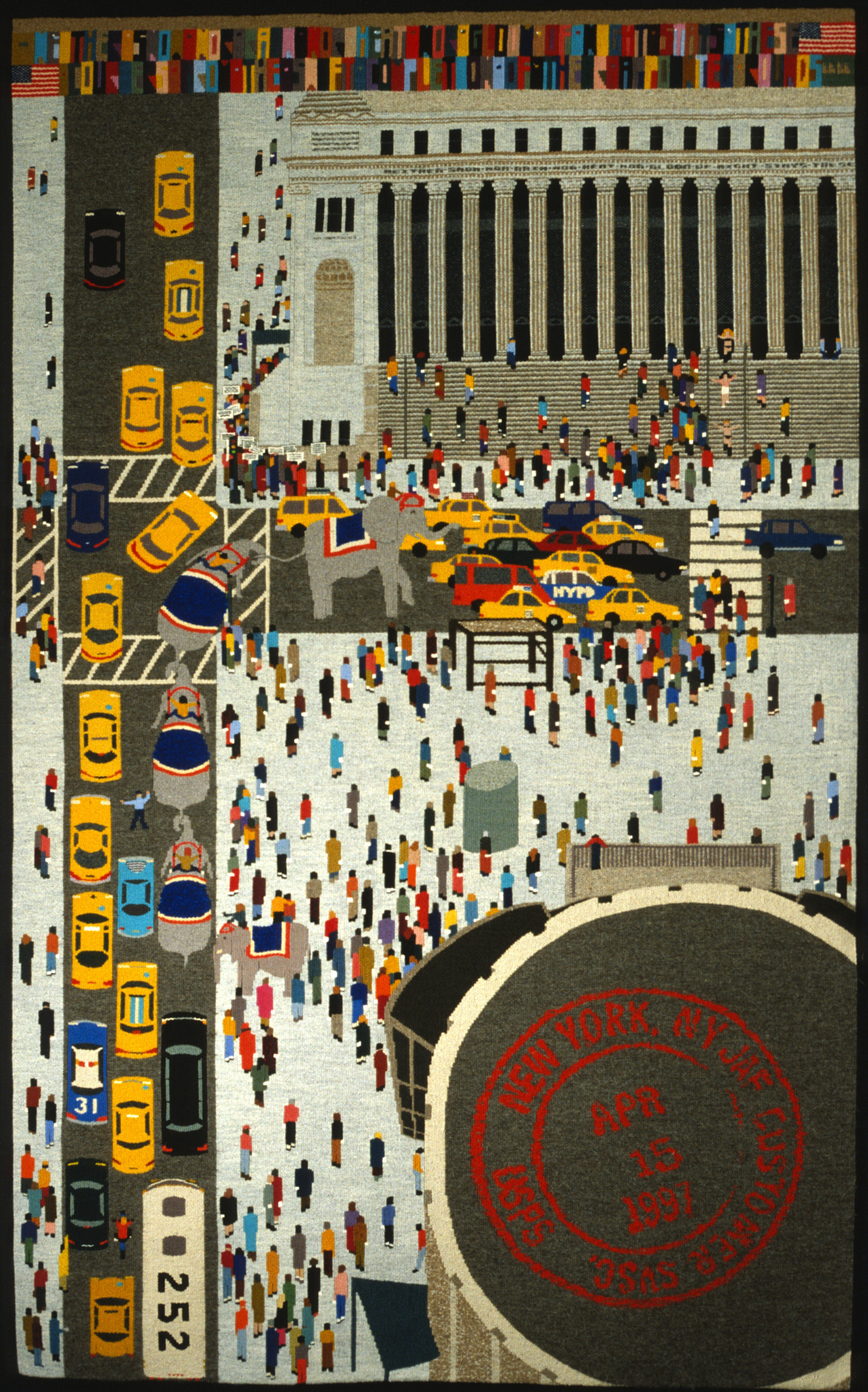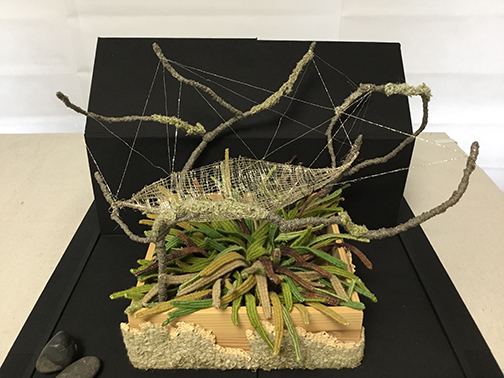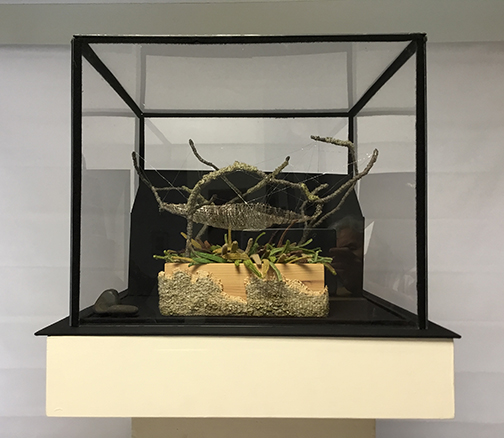The Wonder Series: Golden Bowerbird (Prionodura newtoniana)

The Golden Bowerbird is found only in the northern forests of Queensland, Australia. It is the smallest of the bowerbirds, only about the size of a thrush (9 inches long). Bowerbirds are know only in New Guinea and Australia. They construct unusual and highly decorated bowers to attract females for mating. The towers of the Golden Bowerbird can reach up to 6 or 7 feet in height. Usually there is one large and one smaller tower that support a display perch between the two, upon which the male will perform. Collections of particular seeds, beetle wings, and amber colored mineral and/or coal are presented in groups on the ground leading to the display area. The bowers themselves are decorated with moss, bearded lichens, vines and/or flowers according to the particular aesthetics of each bird. This individual personal decorating is characteristic of all bowerbirds and one of the unusual wonders of these bird’s artistic and engineering abilities.
The Golden Bowerbird is at present listed as vulnerable and is being watched by conservation leagues due mostly to the loss of the particular habitat they require.
Dimensions: 33”w x 23”d x 33”h
Materials and techniques
Tapestry woven ground: linen warp, rami, mohair, linen, cotton and linen paper moiré and wool weft.
Three dimensional grasses: silk wrapped stainless steel multi selvedge warp, fine linen paper weft.
Bearded lichens: fine linen paper
Beetle wings: fake fingernails
Seeds: black seed beads
Amber: colored glass
Saplings and sticks: crocheted linen paper wrapped around galvanized wire
Velcroed plexiglass box: cracks on sides of gold and black yarn stitched with ochre cotton yarn.
Haiku, Susan Martin Maffei
Stick by stick
a bower built
crack by crack
lost habitat
stitch by stitch repair
now – too late there?



The Wonder Series: Golden Bowerbird (Prionodura newtoniana), details,
(left) display stick, beetle elytra, (center) grass, amber, sticks, vines, (right) bower construction with vines.



The Wonder Series: Golden Bowerbird (Prionodura newtoniana), details
(left) crack, (center) bower construction, (right) seeds, feathers, ground
The Wonder Series: Sheet Weaver Money Spider (Linyphildae) and Golden Western Blind Thread Snake (Rena Humilis Humilis)
The Sheet Weaver Money Spider belongs to Linyphildae, the second largest family of spiders in the world. They are known for their hammock and dome shaped webs, which are often found glittering with dew in early morning fields, as well as a particular technique called “ballooning” – drifting through the air attached to a single thread in order to travel to other locations. Because they are actually quite tiny, they are not easy to study and hence not fully understood They are, however, considered to be biological control agents against some pest species such as aphids and springtails. In several countries they are called money spiders because of an ancient folk tale that states that if the spider is found on a person, it has come to spin and weave you new clothes, which, in turn, indicates a better financial future.
The Golden Western Thread Snake is in the family Leptotyphlopidae. The snakes are endemic to the southwestern United States and Northern Mexico. They are blind, pinkish, shiny and wormlike, being only the thickness of a coat hanger wire and usually not more than 12” long. They are the same thickness throughout their length and are florescent under black light. Unlike other snakes, their scales are the same all around their body. Their diet is mostly insects larvae and eggs.
Dimensions: base: 21” x 21”; plexiglass box” 18”w x 18”d x 16”h
Materials and techniques
Grasses: tapestry woven multi selvedge cotton warp, silk wrapped stainless steel and nylon, silk, and rami weft. Lichens: tapestry woven multi selvedge rami warp, paper moire , wool and raffia weft. Spider: tapestry woven silk wrapped stainless steel warp, wool weft. Hammock web: woven multi selvedge gold metallic thread warp and weft. Snake: tapestry woven linen warp, rami and gold metallic thread.
Branches: crocheted linen paper wrapped around galvanized steel wire with crocheted wool moss. Recycled pine box, found rocks, book cloth on book board, Velcroed plexiglass box.
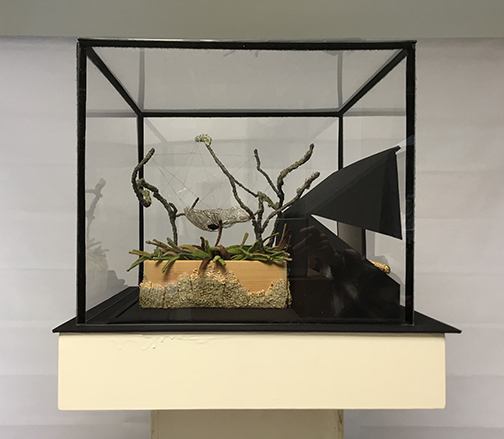
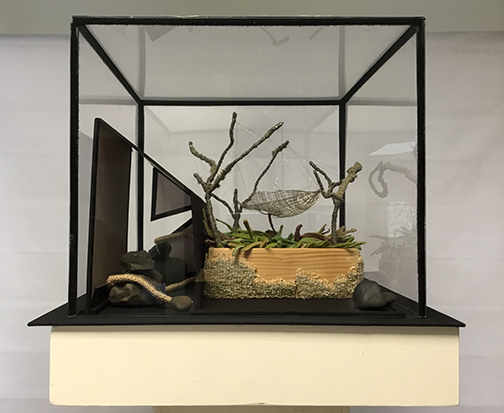
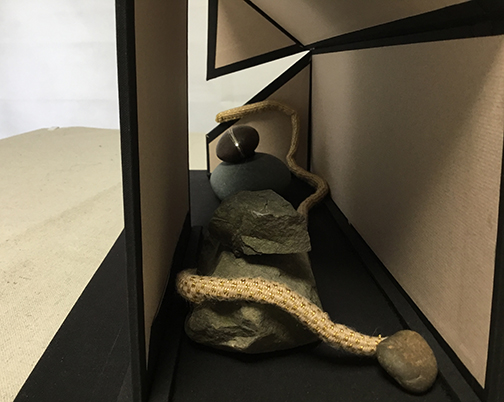
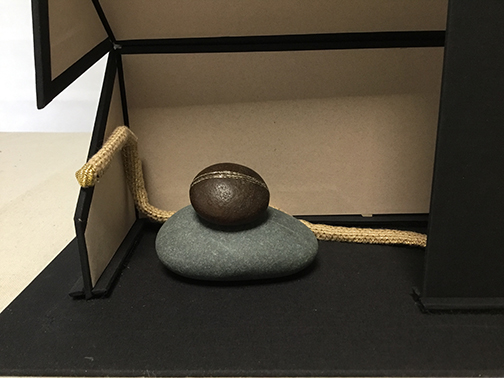
“Sheet Weaver Money Spider (Linyphildae)
and Golden Western Blind Thread Snake (Rena Humilis Humilis)” details
